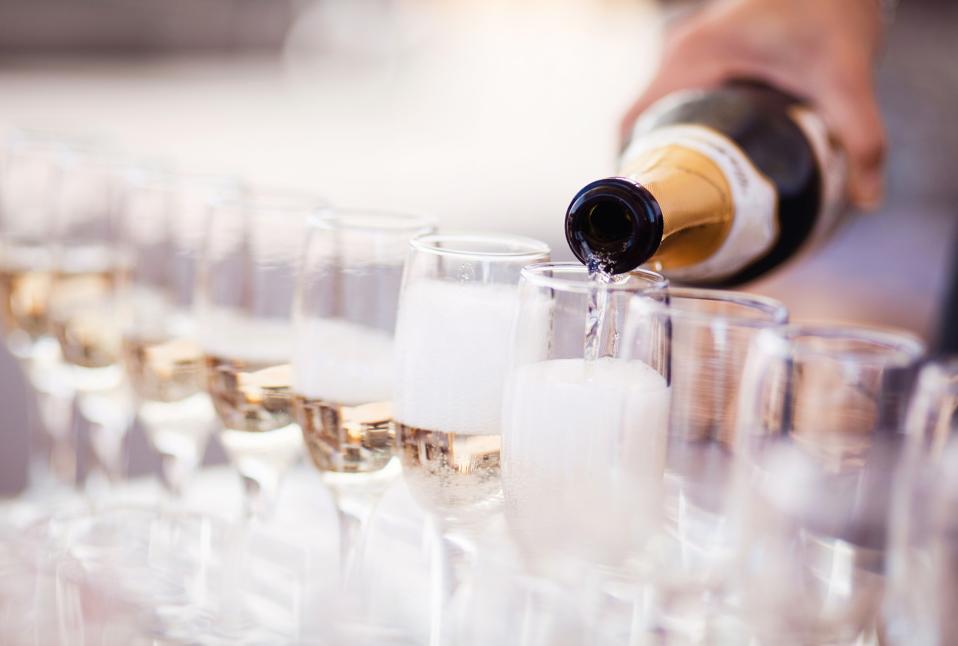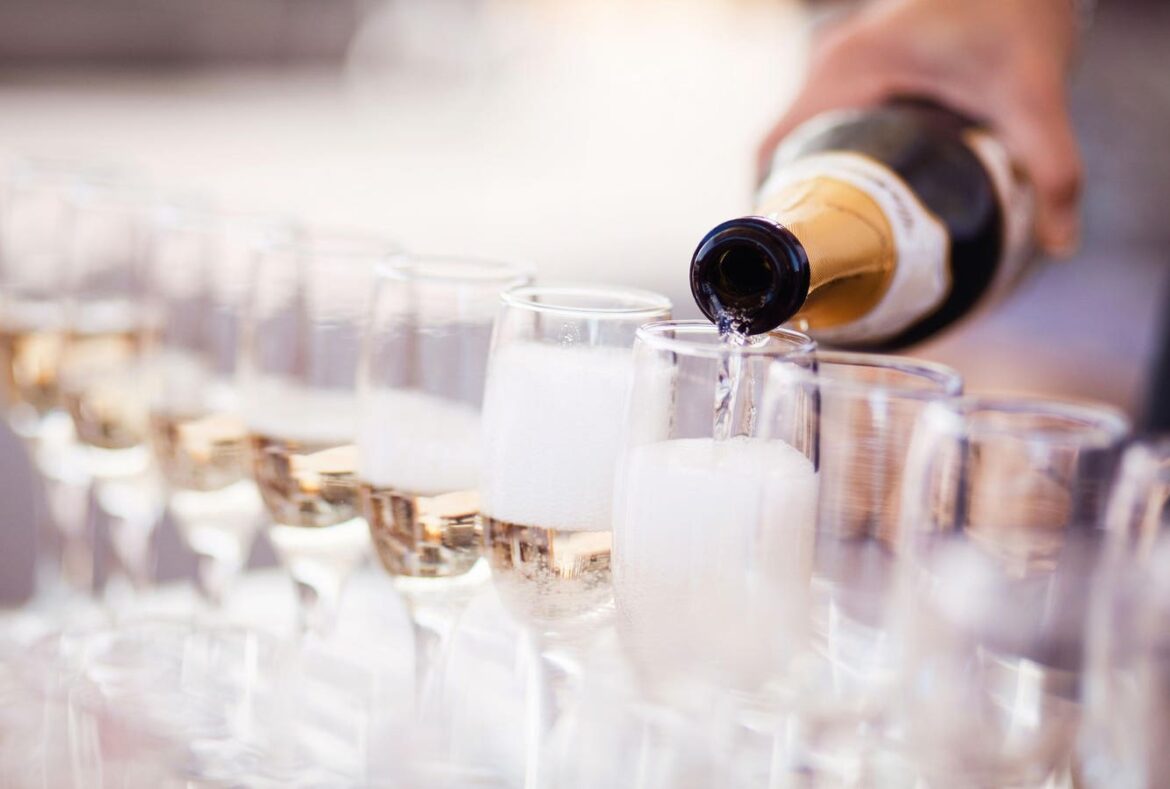
Waiter serving a glass of sparkling white wine
getty
If you’ve ever stared at a wine list and wondered whether you should spring for Champagne or go for that slightly cheaper French sparkling wine called Crémant, you’re not alone. They both have French names. They both have bubbles. They both pair beautifully with french fries. So what’s the actual difference—and which one should you order?
Here’s your quick, no-fuss guide to figuring out which French sparkler fits the occasion (and your budget).
First, the Basics
Festive photo of sparkling wine in glasses
getty
Champagne is sparkling wine made in—you guessed it—the Champagne region of France. The French are extremely serious about this. If it doesn’t come from Champagne, it legally can’t be called Champagne. (Think of it like how only certain ham can be called Prosciutto di Parma, and the Italians will absolutely fight you on it.)
Crémant, on the other hand, is sparkling wine made elsewhere in France, using pretty much the same labor-intensive method—meaning the bubbles come from a second fermentation inside the bottle, not from a soda machine—but without the high-stakes branding (and usually, without the Champagne-level price tag).
It’s like Champagne’s laid-back cousin: still elegant, still fancy, but less likely to max out your credit card.
The Taste Test
Tasting of brut and demi-sec white champagne sparkling wine from special flute glasses with view on … More green Champagne vineyards, France
getty
Champagne is known for its bright acidity, delicate mousse (fancy term for bubbles), and complex flavors. Depending on the bottle, you might taste notes of green apple, brioche, lemon curd, almonds, or even a little smoky minerality. In other words, it’s doing a lot—but in a way that makes you feel fancy, not overwhelmed.
Crémant varies a little more because it’s made in different regions, with different grapes:
Crémant d’Alsace tends to be fresh, floral, and super drinkable.
Crémant de Bourgogne leans a little more like a budget-friendly mini-Champagne.
Crémant de Loire can have apple, pear, and soft citrus notes that feel like a sunny afternoon in a bottle.
Overall, Crémant is usually a little fruitier and softer than Champagne. It’s less “grand gala” and more “really excellent garden party.”
The Grapes
Close up of friends clinking champagne glasses while enjoying Christmas dinner together sitting by … More elegant dining table with candles
getty
Champagne sticks mainly to three grapes: Chardonnay, Pinot Noir, and Pinot Meunier. The balance between these grapes gives Champagne its famous structure and elegance.
Crémant gets to be more experimental. Depending on the region, you might find grapes like Chenin Blanc, Cabernet Franc, Pinot Gris, or even Trousseau. It’s basically a choose-your-own-adventure situation—just with bubbles.
The Price Tag
Champagne bottle in a bucket of ice.
getty
Here’s where Crémant starts looking even better:
Champagne prices typically start around $40 for entry-level bottles and can go well into the hundreds (or thousands, if you’re feeling reckless).
Crémant can usually be found between $15 and $30—and you’re still getting all the charm of French sparkling wine, just without the famous postal code.
Basically, if you want to impress your friends and have enough money left for snacks, Crémant is your buddy.
So, Which One Should You Pick?
Close-up of group of high-quality Champagne corks
getty
Pick Champagne if it’s a big occasion, you want something classic, or you’re looking for that unmistakable “yes, this is fancy” flavor.
Pick Crémant if you want something delicious, festive, and affordable—especially for casual celebrations, weeknight sushi, or “I just finished a really hard Tuesday” moments.
In short:
Champagne says “Congratulations on your promotion!” Crémant says “Congratulations on surviving another Zoom meeting!” Both are important.
Whether you pop open a prestigious Champagne or a playful Crémant, you’re already winning—because you’re drinking good sparkling wine. The real secret isn’t picking the “better” one. It’s picking the one that fits the moment—and the one you’re excited to drink.

